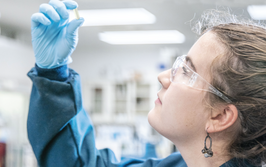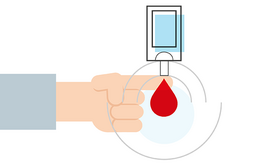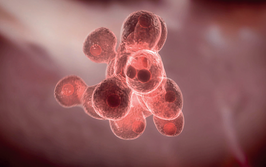
From Single-Use to Re-Use
Even plastic used for biopharma manufacturing can be recycled, if we put our minds to it.
It is well known that single-use systems provide a variety of benefits to drug manufacturers, but the growth of single-use brings to mind the environmental impact that comes with this trend. Globally, we estimate that 30,000 tons of biopharma single-use products are disposed to landfill or incineration every year. Single-use systems are made primarily of plastic, and I think most people agree that plastic consumption should be reduced and recycling increased. In fact, the plastic used in single-use technologies is of excellent quality because it has limited or no additives.
In my role at MilliporeSigma (Global Manager of Customer Sustainability Solutions for MilliporeSigma’s Corporate Responsibility Team), I have been working to find innovative solutions to dispose of single-use plastic since 2013. The obvious solution was to recycle the plastic, but that isn’t quite as simple as it sounds.
Separation syndrome
The early 2000s were a good time for recycling because plastic was very profitable. Everyone was predicting that oil prices would continue to rise and given that plastic is made from oil, there was a huge focus on recycling. When we hit the economic crisis of 2008, however, oil prices did not reach the expected levels and many recycling companies went out of business. The market collapsed.
The reality is that recycling is really not easy right now, especially in biopharma. Obviously we are not a waste management company so doing it ourselves was out of the question! We realized that we needed to partner with a waste management company to help solve the problem. However, most recycling companies can’t financially survive by just recycling biopharma waste. Recycled plastic is considered a commodity and traded on the open market. For a recycling business model to be successful, it is critical to have a clean, homogeneous shredded plastic at the end of the recycling process that can be sold for a profit. Unfortunately, biopharma waste contains products made from many different types of plastic and other materials that are difficult to separate in the current infrastructure. Without separation, the value of the plastic shred goes down and options to resell the material disappear.
Through perseverance, we managed to find a recycling partner that was willing to help, but then we started to hit more hurdles. Biopharma companies use single-use systems from dozens of different vendors. If we wanted them to recycle MilliporeSigma-only components, the customer would need to separate the different products after use. Clearly, this would have been a huge burden for biopharma companies. If we were serious about making a difference, there was only one thing for us to do: accept all plastic, whether it came from a MilliporeSigma product or a competitor. Shifting our perspective to solve the disposal challenges for the whole biopharma manufacturing industry was a huge step for the company.
But it did not solve the separation problem entirely, as our pilot partner would only recycle nonhazardous waste. In addition, the process required manual disassembly and separation of the plastic from the rest of the materials. Tubing needed to be cut from bioreactor bags, filters had to be dismantled by hand… everything needed to be sorted and shredded in a multi-step process.
Our pilot project ran for about four months with a small handful of customers, and when we looked at all the plastic we had gathered that could be recycled and sold, it really didn’t amount to much. Our recycling partner would need to increase their charges to make the business sustainable. It seemed like the recycling industry could not meet the needs of biopharma.
We had reached a wall. To move ahead, we needed a new solution and a sustainable business model. Our pilot program showed that the costs of the recycling program outweighed the benefits, but at the same time customers were still interested in finding a solution that would meet waste diversion and recycling goals. It was time to go back to the waste industry to see if there were any new technologies that we could evaluate. We were at a crossroads of either being a perpetual pilot program or ending entirely.
Adopting a new perspective
Ultimately, the breakthrough came with more research. We performed another thorough search for recyclers, looking for capabilities that we may have originally missed. Amazingly, we found a company called Triumvirate Environmental, who were willing to partner with us. They were interested in biopharma’s single-use plastic because it was perfect for manufacturing an industrial grade plastic lumber. They had a system that could sterilize and process the biohazardous material and the non-hazardous plastic into a new product, all under one roof. A rigorous investigation into their systems proved they could do as they claimed and, ultimately, provide a way to deal with a challenging waste stream and keep the recycling business viable.
Of course, there’s always a catch. Initially we couldn’t roll the program out worldwide. To create a worldwide program, we would need to supplement Triumvirate’s East Coast focus. Fortunately, there are some big bio hubs situated on the East Coast so we have been able to address a large portion of the waste. Additionally, this type of initiative is very new for the biopharma industry, which has led to interesting discussions, but it has seen great uptake. Many companies are interested in starting recycling programs at their sites, but struggle with the challenges. However, the benefits do outweigh the initial costs of putting a program in place. Costs are always a consideration but thankfully, Triumvirate has been able to manage them so that they are comparable to incineration. In fact, we’ve actually seen cost reduction with a few of the participants as the program offers an almost single-stream solution and takes away the need to autoclave waste on site.
Now, we are looking at how we expand our work with Triumvirate, while still maintaining the business. A key component of any recycling system is to make sure that the recycled plastic product has a robust and enduring market. Triumvirate has been evolving and refining their process so that they can increase the type of products available. For example, they can now manufacture a utility grade plastic pallet along with different grades of molded plastic parts used for the landscape, construction and transportation industries. Closing the recycling loop is a continual process, but key to the program’s success.
Biopharma Recycling: Round Peg; Square Hole
Biopharma recycling is faced with four distinct challenges:
- Mixed components: products are made from many types of materials; different types of plastics and membranes, metals and connectors.
- Recycling infrastructure: mixed materials challenge current technologies; the commodities market relies on the price of plastic; traceability is almost impossible; transportation is always an issue.
- Tons of waste: from participants in the program, it is estimated that single-use products account for 14-20,000 lbs per month. This can be up to 50 percent of the solid waste weight for a site and translates to 80-120 tons per year.
- Safety: even when the waste stream is classified as “non-hazardous,” there is a potential for mold and fungi to grow on the residual media; disassembly of products can be risky and dangerous.
Top Tips
- Recycling can be challenging for the biopharma industry, but if you persevere you can find innovative solutions.
- Partnerships and a sustainable business model are key to making single-use recycling programs successful.
- A critical component of any recycling system is to ensure that the recycled plastic product has a robust and enduring market.
- Finding solutions to challenging waste streams opens up new avenues for the development of alternative technologies
The pollution solution
For me, one of the key lessons from our program is that partnerships and a sustainable business model are key to making single-use recycling programs successful. The work to get to where we are today has been challenging but also rewarding – especially when you are working with truly innovative companies who are determined to find solutions to a difficult problem.
The moral of this story is that we can all do something to help the environment – whether you’re a biopharma manufacturer or a vendor. Plastic pollution is an immense and ever-growing problem that will take many different solutions to resolve. Single-use has been a challenging waste stream to tackle and I hope that the work we have done will inspire others to improve upon what we do tomorrow, not only in single-use but other waste streams as well.
Jacqueline Ignacio is Global Manager, Customer Sustainability Solutions, Corporate Responsibility, at MilliporeSigma.
Jacqueline Ignacio is Global Manager, Customer Sustainability Solutions, Corporate Responsibility, at MilliporeSigma.


















